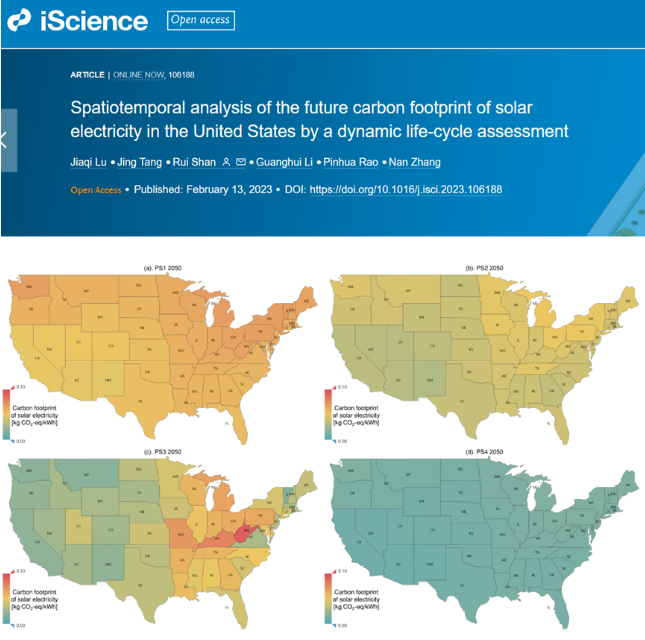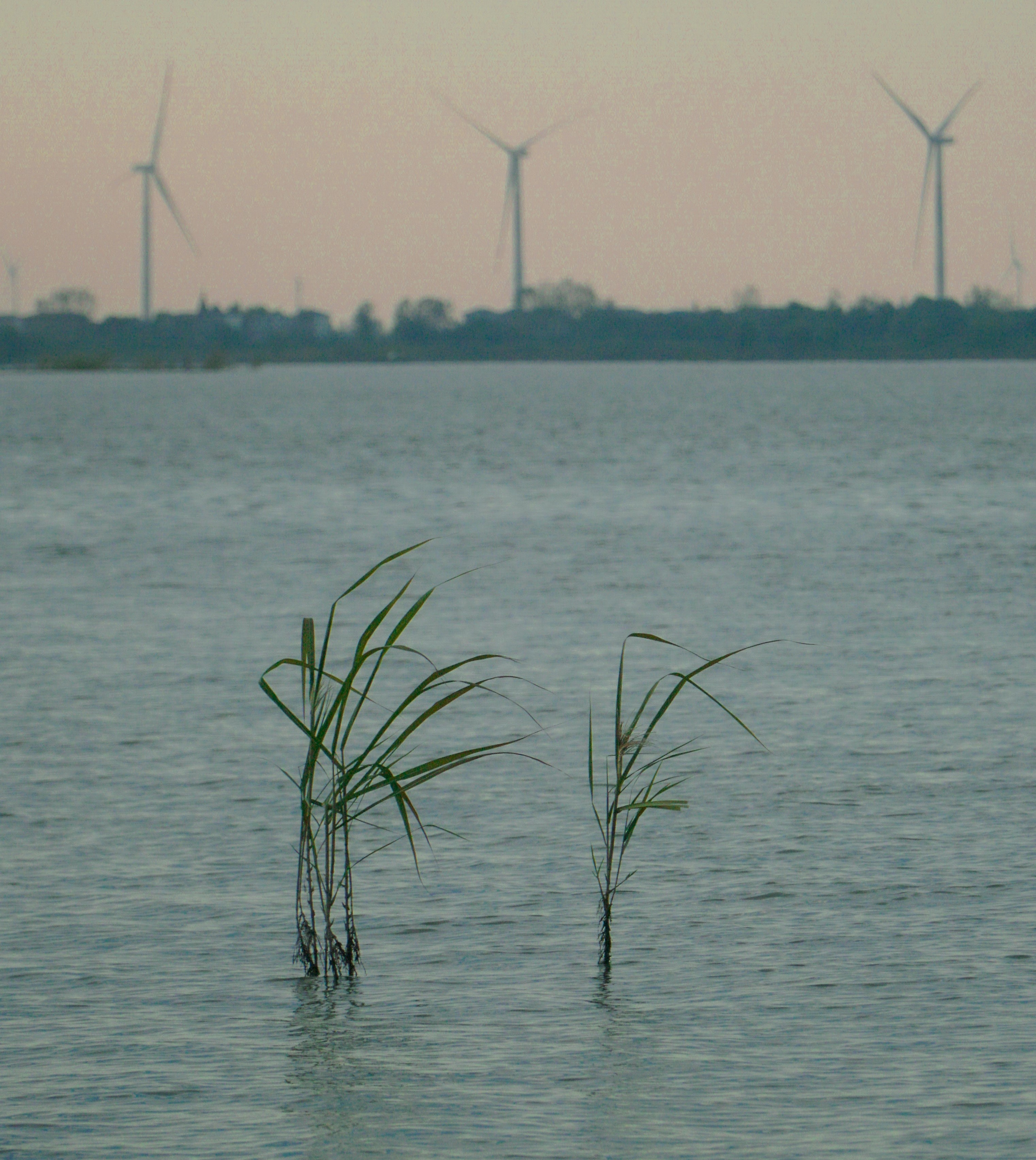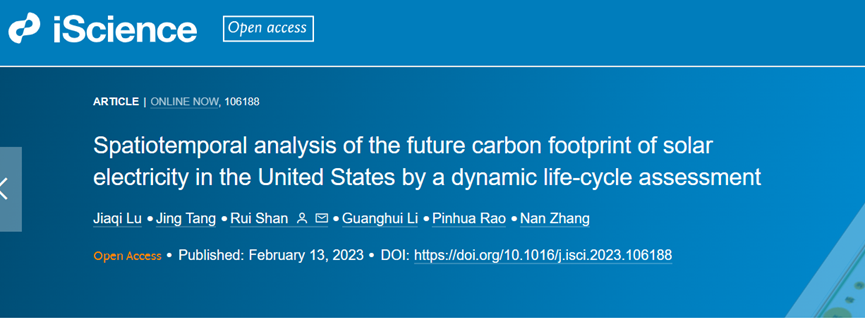Carbon Baseline, in collaboration with researchers from Shanghai University of Engineering Science and the University of Manchester, has published a research paper entitled "Spatiotemporal analysis of the future carbon footprint of solar electricity in the United States by a dynamic life-cycle assessment" in the Cell sub-journal iScience (IF=6.107, JCR Q1), with Carbon Baseline CTO Rui Shan as the sole corresponding author.

Carbon footprint of solar photovoltaic power generation in different states under different scenarios and methods: A) Traditional calculation method; B) Using a dynamic model, assuming that the electricity used in the production process of photovoltaic panels comes from the national average power grid; C) Using a dynamic model, assuming that the electricity used in the production process of photovoltaic panels comes from independent state power grids and assuming that the photovoltaic panels are deployed within the state; D) Using a dynamic model, assuming that the electricity used in the production process of photovoltaic panels comes from local photovoltaic power and assuming that the photovoltaic panels are deployed within the state.
The study proposes a dynamic life-cycle assessment model that considers the low-carbonization process of different regional power grids and analyzes the carbon footprint (cradle-to-gate) of solar panels producing electricity in different scenarios. The study estimates the carbon footprint of solar electricity in each state of the United States from 2022 to 2050. The results show that by 2050, the carbon footprint of solar power (min 0.032, max 0.051, weighted avg. 0.040 kg CO2-eq/kWh) calculated using the dynamic life-cycle assessment model is significantly lower than that calculated using traditional methods (min 0.047, max 0.068, weighted avg. 0.056 kg CO2-eq/kWh).
The spatiotemporal heterogeneity of the carbon footprint of solar photovoltaic power revealed in this study helps policy planners gain a deeper understanding of the low-carbon transformation of the electricity industry. The study shows that increasing renewable energy generation in a leapfrog manner does not lead to a rapid reduction in the carbon footprint of electricity. The study also discusses the optimization layout of solar photovoltaic manufacturing plants in conjunction with the tax incentives in the American "Inflation Reduction Act", which is promising for planning solar PV supply chains and, ultimately, the supply chain of an entire carbon-neutral energy system to maximize the environmental benefits.
iScience is an interdisciplinary journal under the Cell publishing group, covering research in the fields of life sciences, physical sciences, earth sciences, and health sciences. It is ranked Q1 in the multi-disciplinary science field in JCR, with an impact factor of 6.107 and a citation score of 5.7.
View Paper: https://doi.org/10.1016/j.isci.2023.106188


 Request Demo
Request Demo
 Feb 16, 2023
Feb 16, 2023  Carbon Baseline
Carbon Baseline 

